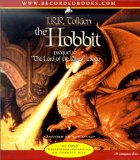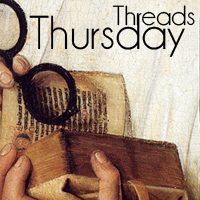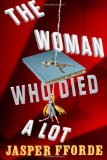This week’s Top Ten Tuesday asks who the most frustrating characters in literature are. I know I’ve wanted to shake all of these people at some point.
- Father Ralph de Briccasart from The Thorn Birds. He could have been really happy with Meggie, but his ambition to rise in the Church was more important than anything else.
- Holden Caulfield from The Catcher in the Rye. I think Stradlater said it best when he said, “Shut up, Holden.”
- Catherine Earnshaw from Wuthering Heights. Oh, come on. Horrible, manipulative snot. Plays on the affections of both men who love her and drove one to vengeful madness.
- Willa Alden from The Wild Rose. Quit being a jerk and accept that Seamus loves you. He doesn’t care about your leg.
- Romeo from Romeo and Juliet. Can you dial back the impetuosity? You are ruining everyone’s lives.
- Pip from Great Expectations. Estella does not deserve you. Quit obsessing over her. She’s horrible.
- Lady Bertram from Mansfield Park. Did she get off her butt once in that novel? Because I can’t remember that she did.
- Lia in Wintergirls. EAT.
- Achilles in The Iliad. Get out of the #$%&@ tent and go fight. Hector thinks Paris is a tool, but he still stands up for his country. Hector deserves more credit. If he had been Greek instead of Trojan, he’d have had it.
- Captain Ahab from Moby Dick. As Starbuck says, “To be enraged with a dumb brute that acted out of blind instinct is blasphemous.” Unfortunately, Ahab doesn’t listen to him, and everyone on the ship, excepting Ishmael, of course, is killed.
Honorable mentions go to Sir Walter Eliot of Persuasion, who values all the wrong things in life; Stella in A Streetcar Named Desire, who sticks with an abusive (albeit hot, especially as played by Marlon Brando) guy who rapes her sister (for crying out loud!); Ennis Del Mar of “Brokeback Mountain,” who can’t let go of his self-hatred and allow himself to be happy with Jack Twist; Daisy Buchanan of The Great Gatsby, who is just awful; Guinevere and Lancelot in all their iterations because they just ruin everything; Tom Sawyer in The Adventures of Huckleberry Finn for being an ass and playing around with a man’s life for sport; Hamlet from Hamlet, who dithers for most of the play and then kills some of the wrong people; and finally, the doctor from The Boxcar Children—why on earth did he not call DFCS when he found out those kids were living in a boxcar? That’s nuts!













